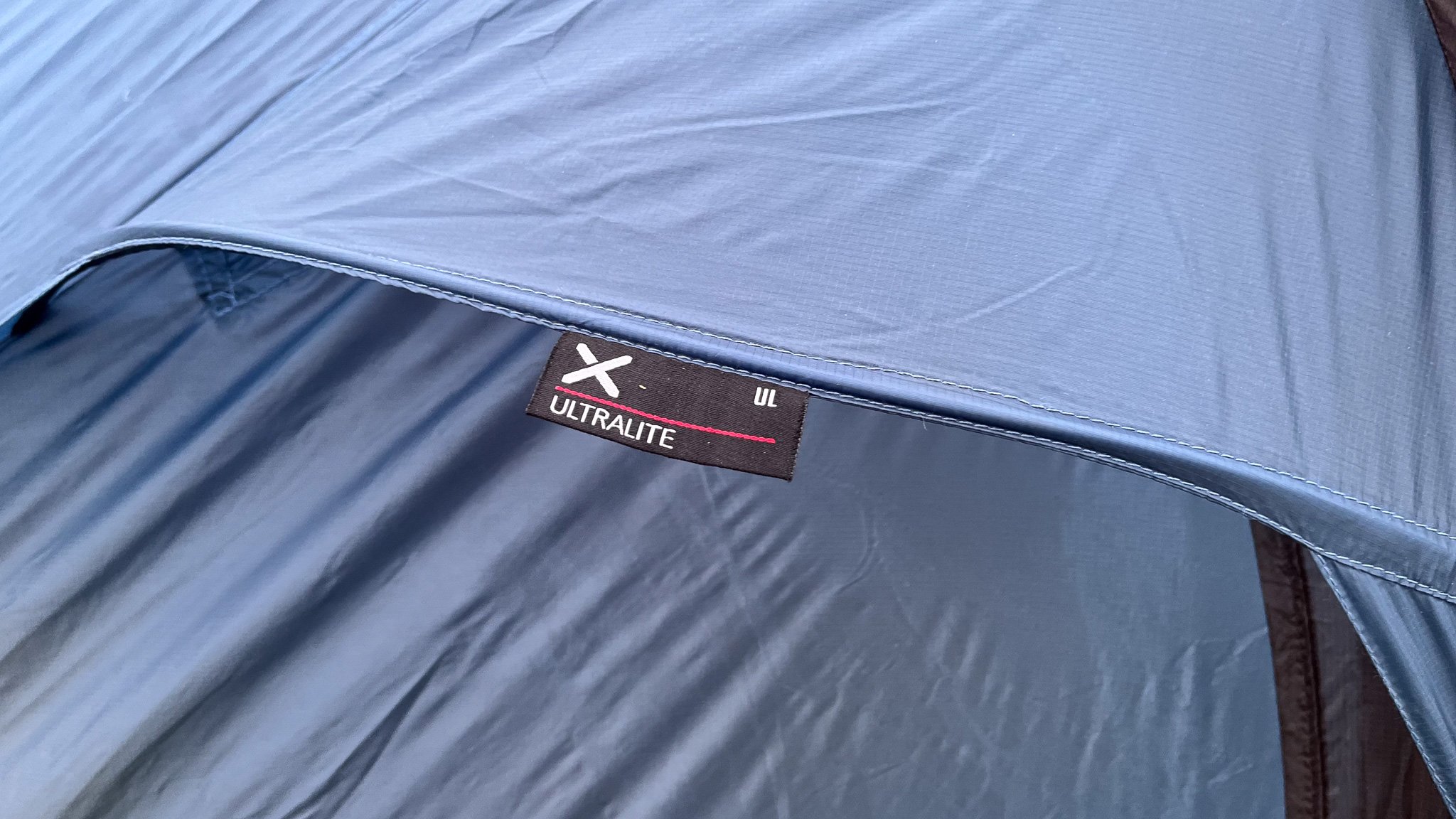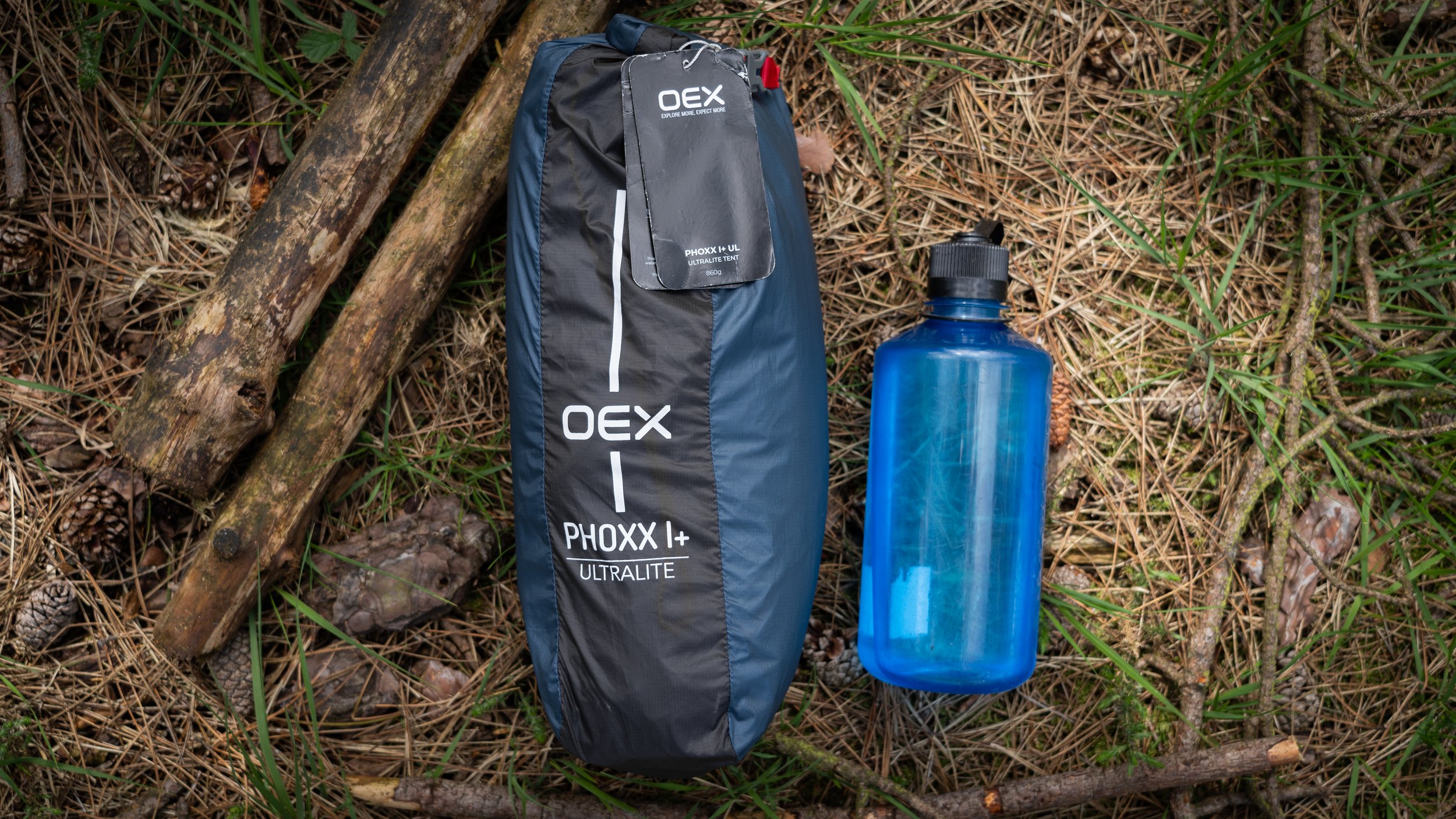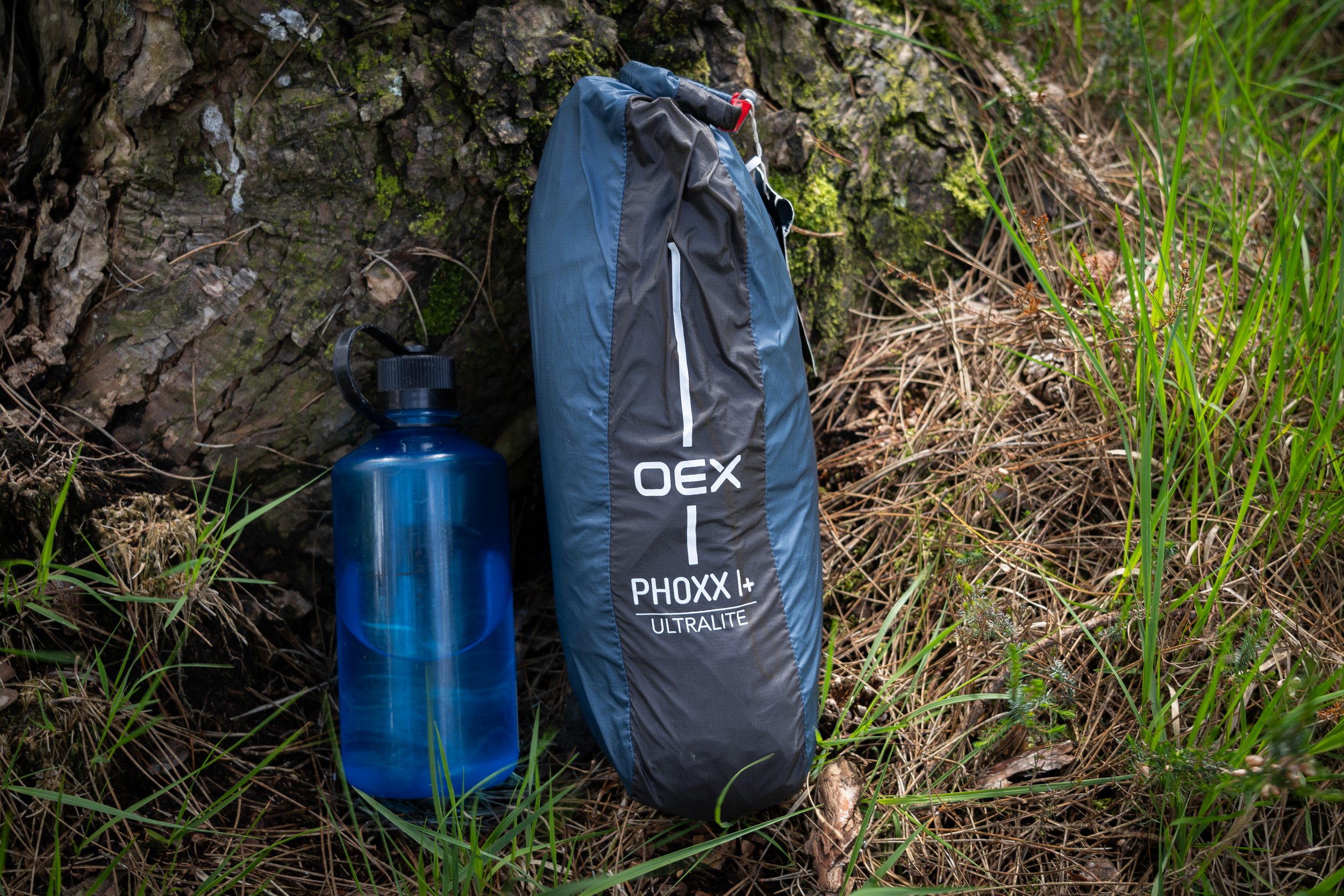OEX Phoxx 1 Ultralite review: An old favourite officially goes UL
The all-new ultralight version of the OEX Phoxx 1, the OEX Phoxx 1 Ultralite, is a super light and easy-to-use backpacking tent that might just offer market-leading bang for your buck right now. But how does it stand up to real-world conditions?
OEX Phoxx 1 Ultralite
Ideal for: Ultralightweight backpacking overnighters, fastpacking, bikepacking
Not suitable for: Winter camping, mountaineering
Coming with a packed weight of 860 grams, the Phoxx 1 UL from OEX is the lightest in the brand’s new line of ultralight backpacking tents. Sold exclusively through the likes of Go Outdoors, Blacks and Millets, the tent is easy to pitch and tiny when packed away, and offers just enough room for one man and a small amount of gear, suitable for 3-season lightweight backpacking, bikepacking and fastpacking trips. Costing a fraction of the price of equivalent ultralightweight tents, the OEX Phoxx 1 UL delivers some of the best value in the tent space right now in our opinion – as long as you’re not claustrophobic.
The Good
Surprisingly good performance in the wind
Easy to pitch
Tiny pack size
Very lightweight
The Bad
Very small interior
Tiny vestibule
Material is fragile
OEX Phoxx 1 UL review
The OEX Phoxx 1 UL is an exciting addition to the backpacking space for 2024. Released alongside an ultralightweight version of the already popular Bobcat line, as well as new additions in the Pantha and the Bandicoot, this bold new step represents the Go Outdoors-owned brand’s first moves in the world of ultralight backpacking. And costing more than half the price of many alternative ultralight lines, the OEX Phoxx 1 UL represents incredible value, too.
A weight-optimised version of OEX’s ever-popular Phoxx line, the Phoxx 1 Ultralite has been updated to feature lighter materials, a silnylon fly and a slightly narrower footprint. Compared to the original, OEX’s design team have managed to shave off an incredible 715 grams – or essentially half the weight of the original Phoxx 1. What’s more, due to the lighter materials, the pack size of the new OEX Phoxx 1 Ultralite is substantially smaller than the original, making this tent a much more attractive option for trips when weight and pack size are more important than having a spacious place to relax after a day on the trail.
These specs aside, however, the most impressive thing about the new OEX Phoxx 1 Ultralite has to be the price. Right now, this tent can be picked up directly from Go Outdoors for an almost unbelievable £169 (or for £310 if you don’t want to pay £5 to become a Go Outdoors member). At that price, the OEX Phoxx 1 Ultralite might represent some of the best bang for your buck on the market right now, with the only real rivals in terms of pound per weight being the Forclaz MT900 Minimal Editions Trekking Pole Tarp Tent (for which you need trekking poles) or the Naturehike Cloud Up series (which is slightly less sturdy in the wind and almost twice the weight of the OEX Phoxx 1 Ultralite). Granted, if you’re happy to extend your budget, you could go even lighter and get a more comfortable shelter, such as the Terra Nova Laser Pulse 1 or the Nordisk ULW Lofoten. Both of these options will set you back over four times as much as the OEX Phoxx 1 Ultralite, however, so unless you’re a super keen camper spending dozens of nights a year outside, the new Phoxx 1 (alongside OEX’s other new Ultralite lines) really might be the most intriguing new entry in the ultralight space for 2024.
What’s up with the prices at Go Outdoors?
If you’re looking into buying an OEX Phoxx 1 Ultralite, you might stumble when you see the two prices displayed at Go Outdoors. Right now, ‘members’ can get the tent for £169, whereas the RRP is £310. But don’t worry, this is simply crafty marketing. To become a member of Go Outdoors, you merely need to sign up in-store and pay £5 for a 12-month membership. This then gives you access to the membership price for all products listed in-store (so you can ignore the inflated ‘retail prices’ listed on the products).
Our experience using the OEX Phoxx 1 UL
Now, before we jump into our experience with the OEX Phoxx 1 UL, we need to establish that this is by no means a long-term review. We got our hands on this new line shortly after it hit stores in May and were lucky enough to get out on a multi-dayer in Dartmoor National Park in it immediately. And despite the weather delivering nothing but bluebird conditions across the country in the weeks leading up to our testing trip, we were hit with unrelenting rain and some serious wind over the three nights we tested the OEX Phoxx 1 Ultralite tent. Which, considering we only had the tent for one week, couldn’t have been better. Therefore, eventhough our thoughts aren’t the product of relentless testing, we still feel like we’ve been able to give the new Phoxx 1 a fair shake and can certainly speak on its performance. You’ll just need to check back in a few month’s time to get an understanding of how it performs long-term.
Pack size and weight
The first thing that we really appreciated about the all-new OEX Phoxx 1 Ultralite is its pack size and weight. Both of these metrics are impressive, and that’s before you consider this tent costs less than £200. Out of the box, the Ultralite Phoxx 1 weighs in at 860 grams (or 710 if you leave all accessories at home), and it packs down to the size of a rolled-up newspaper. During testing, we easily stuffed this into the bottom of a 40-litre lightweight pack, but it’s so small there’s no reason you couldn’t use it as part of an ultralight fastpacking or bikepacking set-up.
Pitching and packing away
Pitching the OEX Phoxx 1 Ultralite is also relatively easy. Doing so is simply a matter of inserting the large centre pole and pegging things out before adding the small support pole at the foot end to keep that section slightly raised. Due to the tight material and the small fasteners, however, we did find that it can be quite a struggle to properly pop everything into place. Getting the ends of the poles into the grommets requires quite a bit of pulling, and we were afraid we were going to damage the material at times. Thankfully, the silnylon fly seemed to put up well with our pushing and pulling, although this is something we will keep an eye on long-term.
Unlike the design of the original Phoxx 1, the inner and the outer of the Phoxx 1 Ultralite are attached. This means that you need to lash the flysheet over the inner, and it means that this UL version of the Phoxx 1 is better suited to rainy conditions. On first pitch, you will need to attach the inner to the outer once everything’s up, but then you never need to worry about this again.
On the 3 occasions we erected the OEX Phoxx 1 Ultralite, we were able to get it up in around 10 minutes, although it was a bit of a faff the first time we tried. For that reason, we’d recommend that you first test pitch the tent at home, just so you’ve got a better understanding of the steps before you end up having to put it up in a rainstorm.
Livability
Inside the OEX Phoxx 1 Ultralite, you’ve got 260 x 50 x 96 cm of space at the thinnest point. Which, to bring those figures to life in a nutshell, is tiny. This thing is basically one step up from a bivy bag, with the only difference to something like the Big Agnes Three Wire Hooped Bivy being that the OEX Phoxx 1 UL comes with a small vestibule. With that in mind, then, don’t expect to be able to store much gear in here at all. A small fastpacking pack or an ultralightweight hiking set-up is about all we could get in it.
Unlike hooped bivvies, however, you are able to sit up inside the OEX Phoxx 1 Ultralite, which is a huge plus. Granted, your head will almost certainly touch the mesh inner if you’re around average height, but for this thing’s weight and pack size, you actually get more space than you might think.
Unlike the original Phoxx 1, the Phoxx 1 Ultralite only comes with one vestibule. Offering around 1-2 feet of usable space, you really can’t store much kit in here, although it does offer enough space to prepare a boil in the bag or similar, especially as the zip on the door goes both ways. In this sense, then, the OEX Phoxx 1 UL might be one of the smallest 1-person tents we’ve ever tested, coming in with slightly tighter dimensions than the coffin-like Robens Starlight 1 or the Robens Chaser 1. That being said, the Phoxx 1 Ultralite is substantially lighter, smaller and cheaper than both of those lines, so that’s certainly not a knock on OEX.
How the OEX Phoxx 1 Ultralite performs in wind and rain
As noted above, we used this tent over 3 nights on Dartmoor National Park. In it, we had to contend with sustained rain and beating wind, with the only respite coming on night 3 when the weather seemed happy to give us a break. That’s to say, then, that eventhough we can’t speak to the tent’s long-term performance, we do have a good understanding of how it performs in inclement weather. And, in a nutshell, we’re impressed.
The first thing to be aware of with the OEX Phoxx 1 Ultralite is that the flysheet comprises silnylon. That means that, unlike on tents with a polyester flysheet, seam tape won’t stick to the material. For that reason, you often have to ‘seam seal’ silnylon tents yourself — and the OEX Phoxx 1 Ultralite is no exception. To do so, OEX supplies a tube of seam sealer in the box with the tent so you can do this at home before you head out. As we were testing a sample of the tent on loan, however, we’re happy to say that we tested it ‘unsealed’ (i.e. as it comes out of the factory).
Despite the tent being unsealed, we didn’t notice any water ingress over two nights of relatively heavy rain and found that the tent did a phenomenal job at keeping us dry even out of the box. That being said, we mirror the manufacturer’s advice and would encourage you to seam seal this tent before you take it out. This way, you’re better protected for the long term and don’t ever need to worry about the seams leaking during super heavy rain.
What’s the deal with seam sealing?
Seam sealing a process you will often have to go through every time you buy a tent with a silnylon flysheet. In a move to keep the price affordable (something that many brands have now instituted), you have to go over all of the permeable seams with the seam sealant provided by the manufacturer. This process can be a bit messy and can take a bit of time, but it does render the shelter 100% waterproof and extends the life of your tent. And it only needs to be done once.
We were less impressed with the OEX Phoxx 1 Ultralite’s performance in the wind. Despite it holding it up really well to gusts of up to 30 mph, we found it near impossible to get any restful sleep due to the noise made by the flysheet flapping about in the wind. It was loud. And no matter how tight we pulled the guy lines or played around with the pitch, we never managed to get enough tension on the flysheet to stop it from creating such a racket. To avoid this, we’d recommend only pitching this Phoxx 1 Ultralite in sheltered locations way out of the wind.
Other than the noise, however, the Phoxx 1 UL does a much better job in the wind than it has any right to do. As it weighs so little and packs down so small (as well as costing less than £200), we expected it to be flattened the second a light breeze hit it. But, as is the case with the original Phoxx 1, the tent holds up well to wind and is remarkably strong for something that weighs 800 grams.
Durability
Lastly, let’s talk about the OEX Phoxx 1 Ultralite’s durability. The flysheet is made from a 10D N-Liten Sil/Nylo with a 1,500 mm hydrostatic head rating. In layman’s terms, it’s thin. Very thin. And even though we didn’t experience any damage ourselves, we’re under no illusion that this tent will put up with years of abuse on the trail if you treat it light you might a heavier tent. If you pull the fly too much or pitch it in a rosebush, you’re almost certainly going to cause some damage.
Inside, the inner is manufactured from a similarly 15D nylon mesh, and the ground sheet is a 10D nylon ripstop material with a 3,000 mm hydrostatic head. Therefore, even though the tent doesn’t come with one, you may consider pairing it with a polycro groundsheet for added protection, especially if you’re pitching this in woodland or anywhere where the ground isn’t just soft, flat grass.
OEX Phoxx 1 Ultralite FAQs
-
We tested the OEX Phoxx 1 UL in the middle of May, so we haven’t been able to test it at the height of the British summer, yet. But due to its lightweight and small pack size, we think it’ll make a great 3-season tent ideal for the UK summer — or especially on trips where you don’t need bags of room inside the tent to store kit.
-
Despite not having tested this tent in winter conditions, we can’t recommend it. Firstly, the space inside is minimal, so you’d struggle to get all of your winter kit into this tent with you when camping in typical wintry conditions. What’s more, due to the lightweight materials it’s made of, you wouldn’t want to camp anywhere overly exposed.
-
Surprisingly, the OEX Phoxx 1 Ultralite performs really well in the wind. In fact, the only thing we noticed during our testing trip is that when hit head-on with wind, the thin silnylon flysheet does have a habit of flapping about. Especially in rain – when the flysheet will stretch (as do all silnylon flysheets) – you simply can’t get the pitch taught enough to avoid this. So be sure to pack earplugs!
-
Pitching the OEX Phoxx 1 Ultralite is super easy. Doing so is simply a matter of adding the centre pole, slotting in the support poles at both the head and the foot end and pegging everything out. With practice, you can easily get this down to a few minutes, and putting it down is just as easy, too. Additionally, because the inner and the outer can be clipped together, there’s no faffing about when putting this tent up in the rain, either.
-
Resoundingly so. If you’re after a sub-1-kilo tent that’s tiny in your pack and easy to pitch and pack away, we really don’t think there’s much else out there that can rival the Phoxx 1 right now for under £200 — as long as you’re happy to camp in a coffin.
Conclusion
Overall, we think the OEX Phoxx 1 Ultralite is an excellent buy. For £169, you get a tent that weighs next to nothing, packs down to a laughably small size and does an excellent job of keeping you safe in bad weather. Naturally, it comes with its drawbacks, as does any super lightweight tent. But unless you’re planning on taking trekking poles with you, we don’t know of any better options on the market right now for a tent this small and light for under £250. Therefore, if you’re looking for an ultralightweight shelter that will keep you safe and relatively comfortable and can be used on a variety of fastpacking, backpacking or bikepacking trips, the Phoxx 1 Ultralite from OEX is certainly one of the most intriguing lines out there for this year’s summer wildcamping season.












